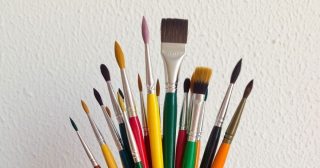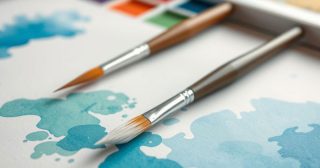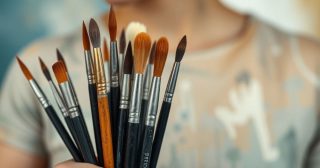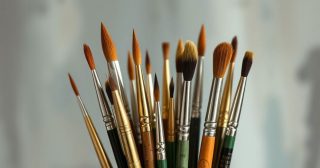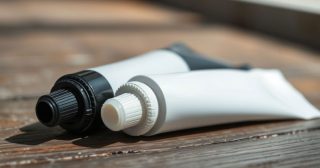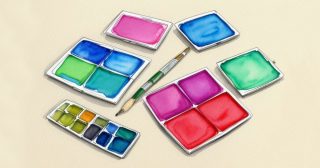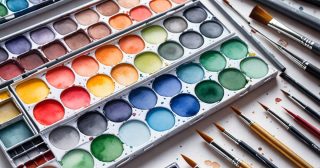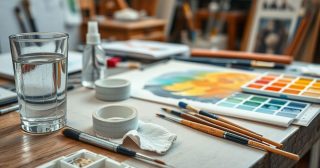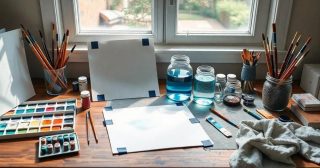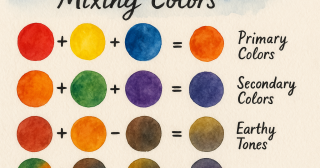What tools and materials are required for watercolor art?
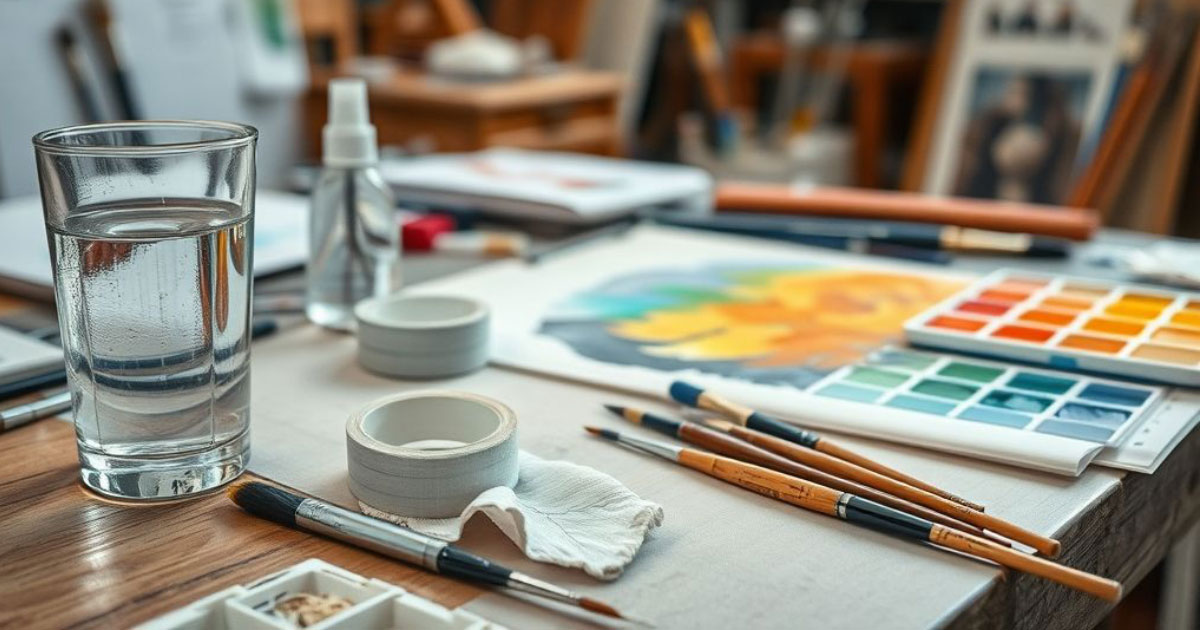
1. Watercolor Paints: Your Palette of Possibilities
The heart of watercolor painting lies in the paints themselves. You have several options to choose from:
- Tubes: These are the most common and arguably the best choice for beginners. They offer richer pigment and allow you to control the intensity and consistency of the paint by adding water.
- Pans: These are dried watercolors in small rectangular or circular containers. They're convenient for travel and plein air painting, but the pigment might be less concentrated than tube paints.
- Liquid Watercolors: These are highly concentrated and vibrant, often used for illustrations and calligraphy. However, they can be more challenging to control for beginners.
For beginners, starting with a good quality student-grade set of tube watercolors is recommended. Look for sets that include a range of basic colors like:
- Red (e.g., Cadmium Red Hue, Alizarin Crimson)
- Yellow (e.g., Cadmium Yellow Hue, Lemon Yellow)
- Blue (e.g., Ultramarine Blue, Phthalo Blue)
- Green (e.g., Viridian)
- Brown (e.g., Burnt Sienna)
- Black (e.g., Lamp Black)
- White (e.g., Chinese White - for opacity purposes, use sparingly)
These colors can be mixed to create a wide spectrum of shades. As you progress, you can expand your palette with more specialized colors.
2. Watercolor Paper: The Foundation for Your Art
Choosing the right paper is crucial for successful watercolor painting. Unlike regular paper, watercolor paper is specifically designed to absorb water without buckling or tearing. Here's what to look for:
- Weight: Measured in pounds (lb) or grams per square meter (gsm). A heavier paper (140lb/300gsm or higher) is recommended for watercolor as it can withstand multiple washes and prevent warping.
- Surface:
- Hot Press: Smooth surface, ideal for detailed work and fine lines.
- Cold Press: Textured surface, versatile and suitable for most watercolor techniques.
- Rough: Heavily textured surface, creates dramatic effects and is great for landscapes.
- Content: Look for paper made from 100% cotton for the best archival quality and water absorbency. Wood pulp paper is a more affordable option, but it may not be as durable or archival.
Start with a cold press paper around 140lb/300gsm. Purchasing a watercolor paper pad or block is a convenient way to get started.
3. Brushes: Your Tools for Applying the Magic
Watercolor brushes come in various shapes, sizes, and materials, each offering different effects.
- Shape:
- Round: Versatile for details, washes, and line work.
- Flat: Used for broad washes, sharp edges, and blending.
- Filbert: A rounded flat brush, good for blending and creating soft edges.
- Angular: For precise lines and details.
- Material:
- Natural Hair (e.g., Sable, Squirrel): Excellent water retention and spring, ideal for delicate washes and fine details, but more expensive.
- Synthetic Hair: More affordable and durable, good for general use and beginners.
A small selection of round brushes (sizes #2, #6, #10) and a flat brush (1/2 inch or 1 inch) will be a good starting point. Synthetic brushes are an excellent choice for beginners.
4. Palette: Your Paint Mixing Station
A palette is essential for mixing colors. You can use:
- Plastic Palettes: Affordable, easy to clean, and come in various shapes and sizes.
- Ceramic Palettes: Offer a smooth, non-staining surface, but can be more fragile.
- Folding Palettes: Convenient for travel and storage.
Choose a palette with multiple wells or compartments to keep your colors separate.
5. Water Containers: Clean Water is Key
You'll need at least two containers of water: one for rinsing your brushes and another for diluting your paints. Using clean water is crucial for achieving vibrant and transparent colors.
6. Other Essential Supplies:
- Masking Fluid: Used to protect areas of your paper from paint.
- Masking Tape: For securing your paper to a board and creating clean edges.
- Pencil and Eraser: For sketching your composition.
- Paper Towels or Rag: For blotting excess water and cleaning your brushes.
- Spritzer Bottle: For rewetting your paints and creating special effects.
- Board or Easel: For supporting your paper while you paint.
Getting Started:
With these essential tools and materials, you're ready to embark on your watercolor adventure. Don't be afraid to experiment with different techniques and colors. Practice is key to developing your skills and finding your own unique style. Happy painting!

